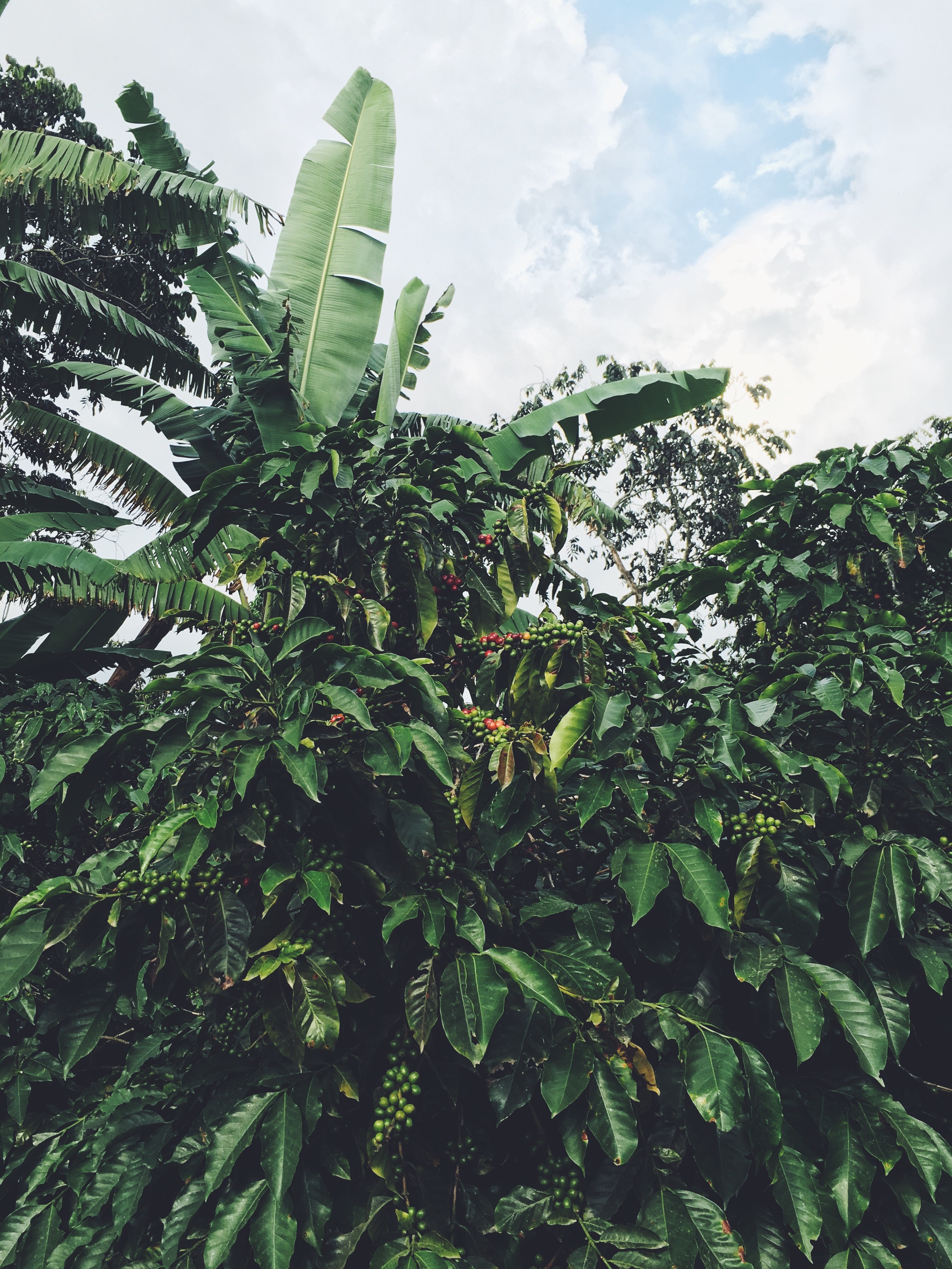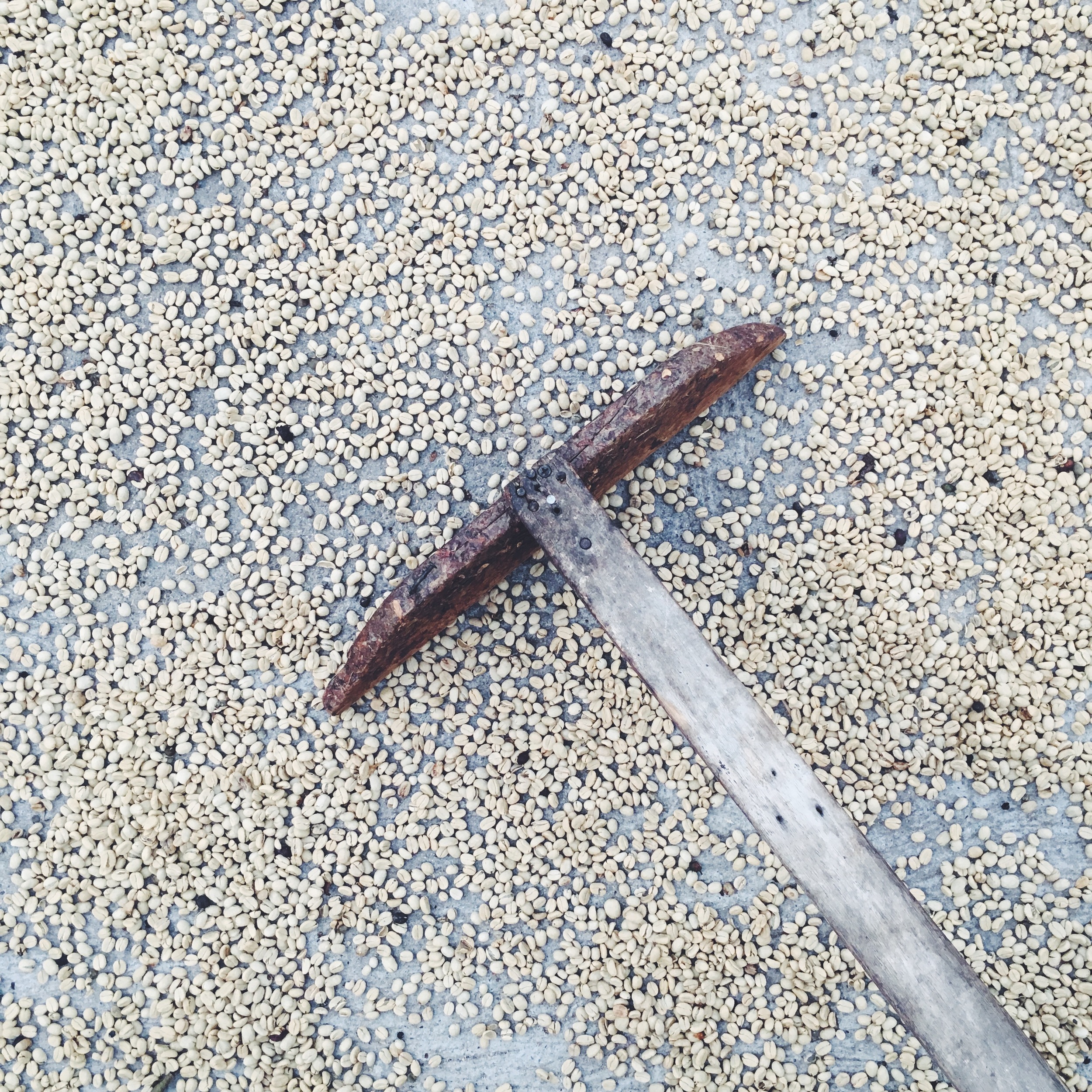Colombia is the third largest producer of coffee in the world, following Brazil and Vietnam.
While we were in Salento we took a tour of a sustainable coffee farm, El Ocaso, and learned about the various stages of the coffee production process: planting, harvesting, milling, roasting and brewing.
El Ocaso is uniquely situated at 1,780 meters (5,840 feet) above sea level, the perfect altitude for growing coffee.
As part of the rainforest alliance, they grow 12 different varieties of trees every 70 hectares. This helps with soil fertility by creating a diverse and balanced environment for the coffee plants to thrive. Plantains are one of the many plants cultivated alongside coffee. They not only provide a food staple for the region, but also create a micro climate for the coffee plants. Their massive, umbrella-like leaves shade the coffee trees from direct sunlight, so the coffee trees can focus their energy on producing fruit instead of trying to keep cool. Shade from the Plantain leaves is also helpful when harvesting ripe coffee fruits.
Planting
Coffee seeds (aka the bean) from coffee cherries are planted into fertile river soil where they quickly grow into little match-like sprouts called fosforos. As the sprouts continue to grow, the seeds fall away and two leaves unfold like wings. This stage is called Chapolas, named after butterfly native to the region.
Healthy Chapolas are then transfered from the soft river soil to bags of nutrient rich, composted soil.
Once the Chapolas are about a foot and a half tall they are planted in ground. Coffee plants produce coffee fruit for five years, the third year is the most fruitful.
After the fifth year coffee trees stop bearing fruit. They are cut to about a foot tall, so that a new tree will grow from the existing root structure and produce another five years of fruit. After another five years, the new trees stop bearing fruit. After a third and final cutting, or Soca, they produce coffee fruit for 4 years.
Thats makes for a total productive lifespan of about 20 years from the coffee trees at El Ocaso.
Harvesting
Coffee is harvested by hand twice a year, in the spring and fall, by women who live in the area. The spring harvest here usually yields more fruit than fall.
Milling and Drying
After harvesting the ripe cherries are depulped, washed and then dried in the sun.
After drying, before roasting, the dried shells are removed to get the "green beans" or unroasted coffee beans.
Roasting and Brewing
El Ocaso works with local roasters to make a variety of light and dark roasts. Light roasts actually have more caffeine than dark roasts because caffeine is lost during the roasting process.



























